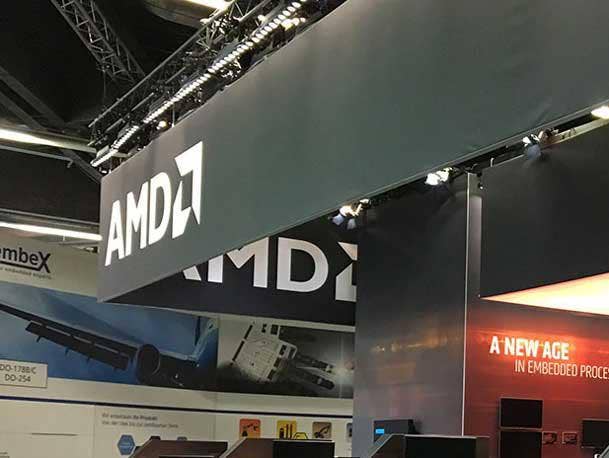Head Of AMD’s Influential Research Group Leaves Amid Other Exec Changes
Alan Lee’s AMD Research group has made crucial contributions in areas like high-performance computing, including high-profile projects such as the U.S. Department of Energy's Frontier and El Capitan exascale supercomputers. Lee’s departure is among a handful of recent executive changes at AMD, which includes the appointment of a new Computing and Graphics leader and executives moving into new sales and marketing roles.

The head of AMD’s influential research group is departing the chip designer 15 years after founding the division that has made crucial contributions in areas like AI, high-performance computing and advanced memory.
Alan Lee, the head of AMD Research, announced Friday on LinkedIn that he has decided to “move on” from the Santa Clara, Calif.-based company, where his group “created a large number of new technologies for the good of AMD, the compute ecosystem and humankind.”
[Related: AMD Sees Record Revenue In 2022 As EPYC Sales Offset Ryzen Slump]
An AMD spokesperson told CRN that the AMD Research team will be led by Ivo Bolsens, who is senior vice president and CTO of the company's adaptive, embedded and AI group. Bolsens joined AMD through its $49 billion acquisition of FPGA designer Xilinx last year. At Xilinx, he was responsible for advanced technology development and research laboratories as senior vice president and CTO.
Lee did not respond to a request for comment.
Lee’s departure is among a handful of recent executive changes at AMD. On Tuesday, the chip designer announced that Jack Huynh, the leader of AMD’s Semi-Custom business group, is taking over the PC chip business, the Computing and Graphics group, from Rick Bergman, who is retiring.
Created as an “entrepreneurial research laboratory,” AMD Research’s mission is to “drive disruptive and revolutionary technology innovation to increase AMD’s growth and profitability,” according to a note from Lee on AMD’s website. To that end, Lee said AMD Research has “been extraordinarily successful.”
“AMD Research helped enable a renaissance at AMD, emphasizing AI and machine learning, high-performance computing, and the efficient use of system resources,” he wrote on AMD’s website.
Crucial Role In Supercomputer Development
Two projects where AMD Research has played a crucial role for the chip designer are the U.S. Department of Energy’s Frontier and El Capitan exascale supercomputers, according to AMD’s website.
Frontier went online last year at the DOE’s Oak Ridge National Laboratory with third-generation EPYC CPUs and Instinct 250X GPU accelerators, which enabled the supercomputer to become the fastest in the world by exceeding one exaflop in double-precision floating-point math, according to Top500. One exaflop is equal to one quintillion floating-point operations per second.
El Capitan is expected to be installed at the DOE’s Lawrence Livermore National Laboratory this year and provide at least two exaflops of peak performance. This will be made possible with AMD’s upcoming Instinct MI300 chips, which will combine 24 Zen 4 CPU cores and a CDNA 3 GPU with 128GB of HBM3 memory in a single integrated package.
Beyond high-performance computing, AMD Research’s focus areas also include advanced memory, which includes processing-in-memory, 3D stacked memory and intelligent memory systems.
The team is also responsible for researching hardware and software innovations in machine intelligence with the goal of making AMD the “desired platform for [machine learning] everywhere,” according to AMD’s website.
In Lee’s LinkedIn post, he lauded his teams for achieving “amazing results through individual innovation, strong teamwork and, to quote Newton, by standing on the shoulders of giants.”
“Thus, it is with great humility and immense thanks that I dedicate my departing post to all who came before, all my colleagues and friends at AMD, all our collaborators, and all those in the future who will continue to see over the horizon and push out the boundaries of knowledge,” he said.
Other Executive Changes At AMD
AMD has seen a few other recent executive changes besides Lee’s departure as head of AMD Research and Huynh’s appointment as senior vice president of Computing and Graphics.
Gaston Sandoval joined AMD in March as corporate vice president of global PC client marketing after previously serving as chief commercial officer of industry solutions at Lenovo, according to LinkedIn. He has spent most of his career at IBM, where he worked from 1995 to 2017.
Meanwhile, Scott Shillington moved to the role of corporate vice president of worldwide commercial sales at AMD, according to LinkedIn. He was previously head of AMD’s global priority accounts.
Last week, CRN reported that Marty Bauerlein left AMD as head of North America VAR sales and commercial distribution after taking the role 18 months ago. The 25-year distribution veteran began a new job as chief commercial officer at D&H Distributing in April.
“AMD has experienced amazing growth in the channel. But at the end of the day, my heart and soul is with running a distribution business,” Bauerlein told CRN in an exclusive interview.